Gluing gemstones can be a tricky endeavor. With expensive and delicate materials on the line, choosing the right adhesive is crucial. When selecting glue for gems, you must consider factors like bonding strength, flexibility, drying time, and ease of use. The good news is that today’s market offers several suitable options for jewelers and hobbyists alike.
Popular choices include epoxy, cyanoacrylate glue, and specialty jewelry adhesives. Epoxy provides unparalleled durability thanks to its rigid bond, but can be thick and difficult to dispense. Cyanoacrylate glues like Super Glue have lightning-fast drying times, yet lack the strength for long-term wear. On the other hand, specially formulated jewelry glues offer moderate flexibility and bond strength. While no glue is perfect, each has potential benefits and drawbacks to weigh.
This article will explore five leading gemstone glues, outlining their advantages and disadvantages. We’ll compare crucial traits like bond strength, appropriate gem types, curing times, and more. With these comprehensive reviews, you’ll gain the knowledge to select the ideal adhesive for your project. Whether you’re a casual crafter or seasoned jeweler, you’ll find the best glue recommendations to create lasting, professional-quality pieces. Let’s review the options so you can confidently glue gems with the right adhesive for your needs.
Best Products
The best choice – E6000 231020 Adhesive
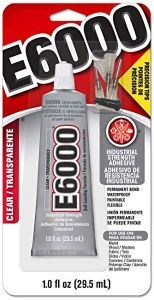
E6000 is an industrial strength adhesive with precision tips. The included tips make it easy to bond to a variety of surfaces, including rocks, glass, wood, plastics, tin, metal and more. Once it dries clear and paintable, you can use it practically anywhere. Plus, it’s photo safe and temperature resistant so you can feel confident using it indoors or out. Plus, it’s washer/dryer safe for your convenience.
I was so excited when I got my new set of gemstones. I couldn’t wait to start making jewelry with them. I read the instructions carefully and followed them to the letter. But when I tried to glue the stones together, they wouldn’t stick. I tried again and again, but nothing worked. The stones just wouldn’t stay together.
I was so disappointed. But then I remembered that I had E6000 231020 Adhesive. I got it out and followed the directions. It was so easy to use and it worked like a charm! The stones were glued together perfectly. I was so happy that I had finally found an adhesive that would work with my gemstones. I told this story to my friends and they were so impressed that they went out and bought some for themselves.
If you’re looking for an adhesive that will bond to a variety of surfaces, including rocks, glass, wood, plastics, tin, metal and more, then I highly recommend E6000 231020 Adhesive. It’s easy to use and it really works! Plus, it’s washer/dryer safe for your convenience. Trust me, you won’t be disappointed.
Pros
- bonds to a variety of surfaces
- dries clear and paintable
- photo safe
- temperature resistant
- washer/dryer safe
Cons
- could be dangerous. Read the instruction
- stones should be bond together for long time
- not always effective if used incorrectly
Also great – G-S Hypo Cement
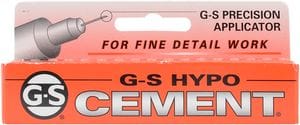
The G-S Hypo Cement is a must-have for anyone who loves arts, crafts, and sewing. It’s perfect for attaching gemstones, beads and pearls, and it can also be used to attach Beadalon wires and cords. The applicator is precision-crafted, making it easy to place small quantities of glue inside beads. The cement is also strong, making it a great choice for anyone looking for a reliable product.
I’ve been working on restoring vintage jewelry for years now, and I have finally found the perfect cement. It’s clear, it doesn’t yellow with age, and it dries quickly. This is going to make my job a lot easier! I told this to my friend, and she was so excited that she went out and bought some for herself.
If you’re looking for a high-quality glue that will help you create beautiful jewelry, the G-S Hypo Cement is the perfect choice. It’s strong, precise, and easy to use, making it a great option for anyone who loves to craft.
Pros
- Clear
- Doesn’t yellow over time
- Dries quickly
Cons
- Can be difficult to apply
- Dries quickly, which can make it difficult to work with
Best for the money – Aleene’s 21709 Jewelry & Metal Instant Adhesive

Aleene’s Jewelry and Metal Glue quickly bonds metals, stones, glass, and beads together with a permanent hold. The gel formula won’t run when applied and dries clear. This adhesive is perfect for any creative ideas you may have that need to stick!
I hesitated to purchase it because I had read several negative reviews, but I took the chance anyway. I just inserted a safety pin into a tiny puncture to keep the glue from leaking out, allowing me to easily apply glue to the pin and onto the region where the stone needed to go. To cover the small hole, I used a small amount of glue and left the top off to have bonded on top to dry, effectively sealing it. The lid seals tightly as well. For any jewelry repair services, I highly recommend this product.
Pros
- Dries clear
- Gel formula prevents it from running
- Holds jewels securely in place
Cons
- Does not come off your hands until it wears off
- Some people have complained about the glue not being strong enough, but I haven’t had that problem
Best for Swarovski – Beacon Gem-Tac Permanent Adhesive

Beacon Gem-Tac Permanent Adhesive is a permanent adhesive that dries clear. It can be used to attach rocks to rocks or other surfaces, and it works on a variety of fabrics including cotton, polyester, and linen. The adhesive is also non-toxic and acid-free so it’s perfect for crafting projects.
Beacon Gem-Tac Permanent Adhesive is also machine washable and dry cleanable, making it a great choice for different projects. The possibilities are endless with this versatile adhesive!
I’ve been using GemTac to attach Swarovski crystals to my dance costumes for years now, and I swear by it. It’s the only glue that I trust to hold up under the stress of dancing, and it doesn’t produce any nasty glue strings like E6000 does. Plus, it’s a lot easier to control than E6000, so you don’t have to worry about making a mess. I told this to a friend who is a costume designer, and she started using it too. Now we both swear by Beacon Gem-Tac Permanent Adhesive!
If you’re looking for a permanent adhesive that dries clear and can be used on a variety of surfaces, then Beacon Gem-Tac Permanent Adhesive is the perfect choice for you. It’s versatile, non-toxic, and machine washable, making it a great choice for different projects. Give Beacon Gem-Tac Permanent Adhesive a try today and see how it can help you with your next project!
Pros
- dries clear
- can be used on a variety of surfaces
- non-toxic
- machine washable
- easy to control
Cons
- good for use with flat-backs on material and leather only
- the glue in the nozzle dries quickly
What is the glue for gemstones?
Jewelry glue is used to bind two pieces of gemstones together. It also allows the elements of your piece of jewelry to be held together more securely, preventing them from coming apart over time. The type of glue you choose to use will depend on the stones you are working with and how delicate they are.
Choosing the Right Glue for Your Project: Beyond the Basics
Given the various factors to consider, the process of selecting the right glue for your project might feel somewhat daunting. It’s important to remember that the task at hand, the materials used, and the desired outcome all play vital roles in determining the ideal adhesive.
Understanding Different Glues
To further clarify, let’s delve deeper into understanding different types of glue:
Super Glue
Super glue, also known as cyanoacrylate, is a quick-drying adhesive that forms a strong bond with non-porous surfaces, such as ceramics or metal jewelry. This glue is not typically recommended for porous materials, but it can be beneficial for those quick fixes in jewelry making.
Gorilla Glue
Gorilla glue is a versatile adhesive known for its incredible strength and durability. It’s water-resistant and can bond to a variety of materials, making it ideal for a broad spectrum of craft and repair jobs. It’s especially effective when gluing tumbled stone to metal surfaces.
Epoxy Glue
Epoxy glue is another category of adhesive that comes highly recommended for jewelry making. It often comes in a two-part system: a resin and a hardener. When mixed together, they form a powerful bond that’s hard to break. One popular option is Epoxy 330, which is often best used for bonding gemstones to metal findings. It also has a clear, transparent finish, making it unnoticeable in your finished projects.
Fire Mountain Gems and Beads
While not a type of glue, Fire Mountain Gems and Beads is a popular online craft store for jewelry designers. They offer various adhesives, including those mentioned above, catering to a variety of crafting needs.
Factors to Consider for Best Results
When choosing the right glue for your project, a few key aspects need your attention:
- Material Compatibility: The type of materials you are planning to bond significantly impacts the glue to use. For example, super glue works best with non-porous materials, while epoxy glue is generally more versatile.
- Working Time: Different glues have different working times, i.e., the time you have before the glue begins to set. If you need a quick bond, a 5-minute epoxy or super glue might be your best bet. However, for more detailed projects, you might want a glue with a longer working time.
- Durability: Will your project be subjected to water, heat, or significant pressure? If so, you’ll need a strong, durable glue like epoxy or gorilla glue.
Tips for Applying Glue
Once you’ve found the right glue for your needs, remember these tips to achieve the best results:
- Clean all surfaces before applying glue: Even the slightest bit of dust or oil can prevent the glue from forming a strong bond.
- Apply glue directly to the surfaces to be bonded: This technique ensures a strong bond. However, be careful not to use too much glue, as it could seep out from the sides and ruin your project.
- Allow the glue to cure: Don’t rush this process. Most glues reach maximum strength only after they’ve been left to cure for the time recommended by the manufacturer.
Testing Glues for Your Project
Given the many types of glue available, you might need to experiment to find the right one for your jewelry-making projects. We have brought them back for testing after scouring the store looking for something specific. We then determined whether they performed to our satisfaction.
For example, one glue we tried had two tubes in the package: one resin and one hardener. Despite being hard to find in local stores, it yielded a robust and clear bond that held up under stress.
So remember, your choice of glue can significantly impact your project’s final look and durability. Take the time to research, test, and select the best glue for your needs. With the right glue and a bit of patience, you can create the best results in your jewelry-making projects. Good luck and happy crafting!
The 3 best types of glue for gemstones
Epoxy is the best general-purpose glue for gemstones. It’s also good to use when you have different types of stones being glued together, or if your project will be worn in wet conditions since it withstands water well. Epoxy can even hold heavy gems! However, it does take several hours to set up and cure—so only use it when you have plenty of time to work on your project.
Epoxy is best for: gemstones, different types of gems together, and projects that will be worn in water or wet conditions.
Resin can bond almost anything—it’s technically a type of plastic! But because it holds well (much better than glue) and is relatively cheap, it’s a popular choice for gemstone gluing. It dries quickly so you don’t have to wait long before moving on to the next step in your project, and it can be sanded and polished after it cures.
Resin is best for anything! But especially porous materials like wood or stones.
Metal fillings are the best choice for delicate gemstones. They’re very thin and can be inserted into tiny cracks or holes in the stones without doing any damage. Plus, they have a really strong bond so you don’t have to worry about your gems coming loose. The downsides are that they’re more expensive than epoxy or resin, and it takes a long time to fill the whole crack or hole with metal, so you have to wait overnight for these.
Metal fillings are best for delicate gems like opal and pearls since they’re very thin and don’t damage them. It’s also good if your project will be worn in wet conditions (like water) since the metal doesn’t rust or corrode easily.
Which glue for gemstones is best and why?
The type of glue you choose to use for your project will depend on the stones you are using and how delicate they are. If you’re working with very fragile gems, then metal fillings would be the best option since they have a strong bond and don’t damage the stones. For gluing different types of gemstones or if your project will be worn in water or wet conditions, then epoxy is the best choice since it’s waterproof and holds well. If you just need a general-purpose glue to work with any type of gemstone for your project, then resin would be the best option since it dries quickly and can hold up many different types of stones!
Gluing Rhinestones onto Fabric
Gluing rhinestones onto fabrics like cloth or leather to create sparkling bracelets or clothing is a popular jewelry making technique. But what is the best glue for rhinestones on fabric? There are a few good fabric glues for jewellery making to consider.
Types of Fabric Glue
- E6000: This flexible, strong fabric glue is commonly used for gluing rhinestones. It has a long drying time that allows repositioning of stones.
- Gem Tac: A popular rhinestone glue that dries clear and is washable when cured. It has a thicker consistency for control.
- Aleene’s Fabric Fusion: Specifically designed for adhering rhinestones to fabric. It is permanent, flexible, and washable.
- Devcon 5 Minute Epoxy: A quick-drying epoxy perfect for flat back rhinestones. It bonds strongly and dries transparent.
Tips for Gluing Rhinestones
Here are some top tips for gluing rhinestones onto fabric or clothing:
- Clean the fabric surface so glue adheres well. Gently rub with alcohol.
- Apply a small amount of glue directly onto each rhinestone base.
- Press the rhinestone down firmly for 30-60 seconds. This helps the glue bond to the fabric.
- Let glue cure fully (up to 24 hours) before wearing the item.
- For removal, apply heat to soften the glue. Goo Gone can also help dissolve the glue.
- Avoid getting glue on the visible rhinestone surface, as it can be difficult to remove.
Overall, epoxy and fabric-specific glues like E6000 or Gem Tac work best for adhering rhinestones securely to fabric surfaces. Follow the application tips above, and your rhinestones will shine!
How to use
Now that you know which type of glue is best for your project, it’s time to learn how to use it! The glue comes in many different forms: tubes, bottles, or syringes. Here are a few tips on how to use the right one for your gemstones:
- When using epoxy, be sure to mix the resin and hardener evenly before using. If you don’t, then your glue will be too thick or too runny and it won’t work well.
- Epoxy takes several hours to set up and cure, so be patient!
- Resin is a great general-purpose glue, but it’s important to shake the bottle well before using it. This will help to mix the resin and the hardener so that your glue sets up properly.
- When using metal fillings, you’ll need a syringe to apply the glue accurately and without doing any damage to the gemstones. Be sure to insert the needle into the metal filling very carefully—if you push too hard, you could damage the stone.
- Make sure to use enough glue! If you don’t put enough on, then your gems might not stay in place. But if you use too much, then it will ooze out from under the stones and create a mess. A good rule of thumb is to apply a thin layer of glue to the surface of the gemstone and then press it into place.
- Let the glue dry completely before moving on to the next step in your project! If you try to continue before the glue has dried, then your gems might come loose.
Best practices
When you’re working with any type of adhesive, it’s important to follow some basic safety guidelines. Here are a few tips on how to stay safe when using glue:
- Be sure to wear gloves when handling the adhesive. This will help keep your hands from getting dirty or stained, and it will also protect them from any harsh chemicals in the glue.
- Work in a well-ventilated area. Glue fumes can be harmful to your health, so it’s best to avoid them by working outdoors or in a room with open windows.
- Make sure the surfaces you’re working on are covered with newspapers or some other type of protective covering. This will help keep your work area clean and free from stains or glue drips.
- After you’ve completed your project, let the glue dry completely before touching it! If you try to remove a glued gemstone while it’s still wet, then it might come loose. Most types of adhesive take at least 24 hours to dry fully (except epoxy—it can take up to 48 hours), so be patient!
- When you’re finished with the project, throw out your glue properly instead of just throwing it away in the trash. If you don’t, then it could come into contact with children or animals who might try to play with it and get hurt. Glue is also flammable (except for epoxy), so it’s best to store it in a safe place where it can’t accidentally be set on fire.
The importance of testing out
Before spending a lot of money on expensive gemstones, it’s important to do some research and testing at home first. Here are some tips for how you can test out different types of glue:
- Start with the cheapest adhesive that still works well (i.e., resin). It will be easier to see if this type of glue is right for your project if you don’t spend a lot of money on it.
- Try out different types and brands of adhesive to see which ones work best for you. Not all glues are created equal, so you might have to experiment a bit to find the one that works the best.
- Test out the glue on a small project before committing to a larger one. For example, you might want to try gluing some gems onto an inexpensive pair of earrings before using it on your expensive ring or necklace.
- Use different types of stones and see which ones work best with the glue (i.e., epoxy is great for topaz). Different gemstones require different types of adhesive, so it’s important to do your research before starting a project.
- Be patient! It can take some time to find the right type of glue and the right way to use it. Don’t get discouraged if your first few attempts don’t turn out perfectly. Just keep trying until you find what works best for you.
FAQs
Can I use regular glue to attach my gems?
It's not recommended to use regular glue to attach gemstones. Regular glue is not as strong or durable as other types of adhesive, so it might not hold the stones in place for very long.
What type of adhesive should I use for resin gems?
Epoxy is the best type of adhesive to use when attaching resin gems. It's especially important to choose epoxy if you're using a gemstone that has been dyed because it won't change color over time like other types of glue might do.
What kind of finish should I look for when choosing an adhesive?
When you're choosing an adhesive, it's important to look for one that has a glossy finish. This will help the gems stand out and look their best.
Can I use superglue to attach my gems?
While superglue is a strong adhesive, it's not recommended to use it to attach gemstones. Superglue can be very brittle, so the gemstone will likely come loose over time.
What if I don't have any of these types of glue on hand?
If you don't have any of the types of adhesive mentioned in this post, then there are a few other options that you can try. For example, clear nail polish or even hot glue might work if applied properly. Keep in mind though that these types of adhesive are not as strong as the ones recommended above, so they're only suitable for simple projects involving small gemstones (such as earrings).
What is the best glue for bonding rocks together?
The best glue for bonding rocks together will depend on the type of rock, the surface condition of the rocks, and the environment the rocks will be in. Epoxy is a great option for bonding rocks together because it creates a strong bond, it is waterproof and can withstand extreme temperatures.
How do I prepare the rocks for gluing?
To prepare the rocks for gluing, they should be cleaned of any dirt or debris, and any rough or uneven areas should be smoothed down. If the rocks are porous, they should be sealed with a sealant before gluing. If the rocks are wet, they should be completely dry before gluing.
How much glue should I use?
The amount of glue you should use will depend on the size and shape of the rocks you are gluing, and the strength of the bond you require. As a general rule, you should use enough glue to create a thin, even layer between the rocks, but not so much that it creates a large amount of excess glue.
Final thoughts
For many jewelry makers, the type of glue used to bond two pieces together is a critical decision. There are three options for gluing gemstones and each has its pros and cons. Epoxy adhesives will provide strong bonding but can be difficult to remove from surfaces once they’ve dried; resin offers improved flexibility over epoxies but also requires more time to dry; metal fillings offer structural strength as well as stability in high-wear areas. It’s worth experimenting with different types of glue before committing to one option only. You might find that one works better than another depending on your project needs!
Ready to start? Begin with ruby.
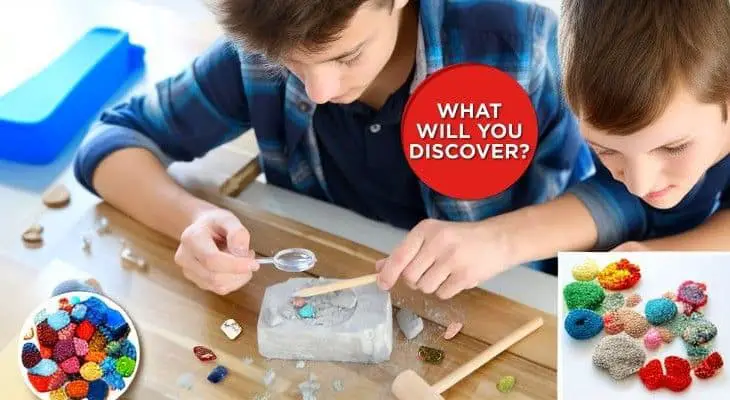
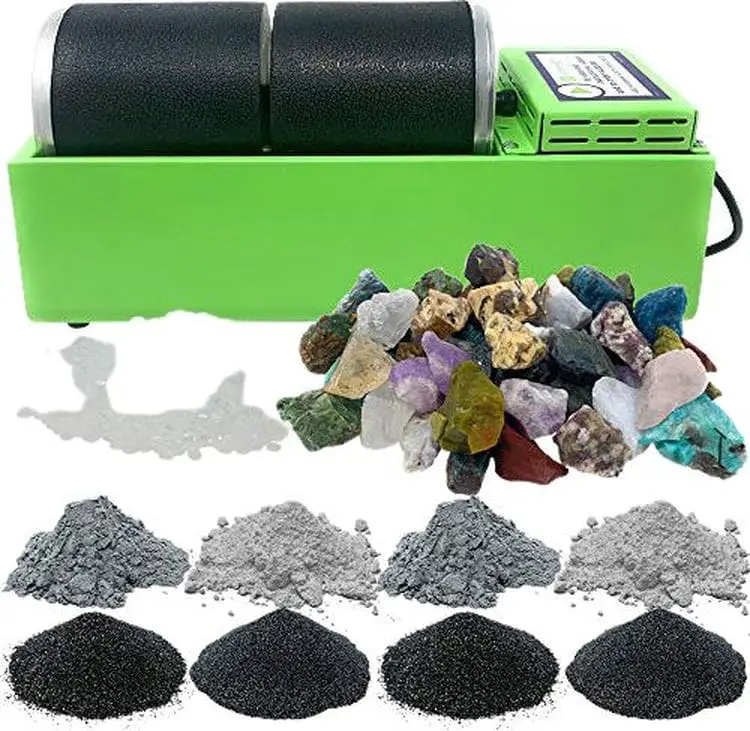
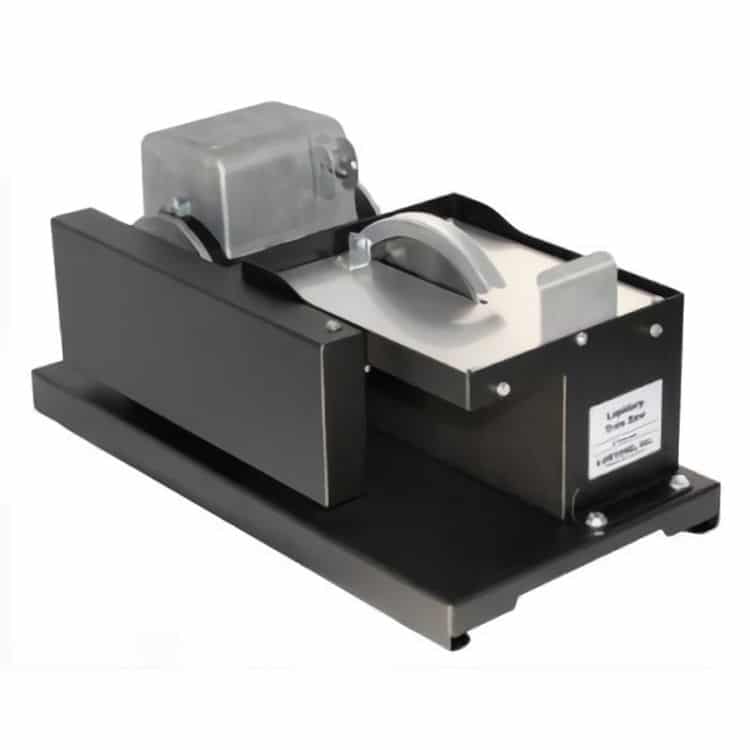

Leave a Reply